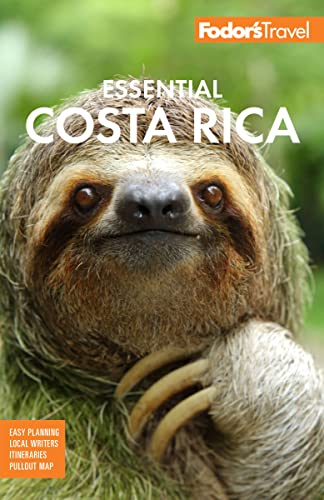Great Itineraries in Costa Rica
Costa Rica looks disarmingly small on the map. This country the size of Vermont and New Hampshire combined should be easy to take in, right? Arrive here and you’ll see that a mountainous spine transects the country and dirt roads make driving downright abysmal. Ambitious plans to see the entire country never materialize. Rather than rushing around—and rushing is something you can’t easily do here—pick and choose a couple of destinations and get to know them well.
Lay of the Land
San José and the Central Valley. Costa Rica’s congested capital sits smack-dab in the center of the country. Because it's the country’s transportation hub, you’ll likely pass through, even if only on your first and last days here. Coming to Costa Rica on business? You’ll probably get to know the city well. San José gives way to bustling suburbs, then smaller towns, then pastoral countryside ringing the capital in a mountain valley (elevation 3,000–5,000 feet). Take in the valley as day trips from the city or base yourself out here. San José’s Aeropuerto Internacional Juan Santamaría sits in the Central Valley, too.
The North. Transportation is straightforward in the vast, mostly flat northern one-third of the country that makes up the Northern Lowlands. This area has two of Costa Rica’s biggest attractions, Arenal Volcano and Monteverde Cloud Forest. Roads are decent here, with the exception of the notoriously awful route to Monteverde—and, even here, paving is on the drawing board. You’d think a highway, north to south, would line the northern Pacific coast, making it easy to bop among this region’s famed beaches and down through the Nicoya Peninsula. However, you frequently have to head back inland to get to the next strand of sand down the coast. If this area is your sole destination, book your flights to Liberia’s Aeropuerto Internacional Daniel Oduber Quirós, rather than down to San José.
Manuel Antonio and the Central Pacific Coast. A spiffy highway puts San José an hour or two from the beaches along this section of the coast. That's great for the tourism industry here, but you should book space for holidays and high-season weekends in advance: Costa Ricans love to take minibreaks to this region, too.
The Osa Peninsula and the South Pacific. The south is rarely first-timer’s territory—even most Costa Ricans have never ventured to the southern third of their country, a land of remote beaches, mountains, and wilderness ecolodges. Transportation is improving to and within this splendid region, but can still be a chore. Sample it, though, and you might count yourself among the growing number of fans.
Tortuguero and the Caribbean Coast. Once you get over the hump of the mountains north of San José, a good road puts you directly en route to the sultry, tropical southern Caribbean coast, still largely the province of European visitors and less known in American circles. The northern Caribbean coast near Tortuguero National Park is a different story entirely: no roads exist up here, making boat or plane your only travel options.
Timing
Costa Rican Tourist Board surveys show that U.S. visitors spend an average of nine days on a trip here. That’s ample occasion to take in destinations in a couple of regions, and it accounts for time to get from one place to the other. (Depending on the places you choose, that last part can be more of a chore than you may realize.) Rather than packing too much in, keep repeating that most Costa Rican of expressions, si Dios lo quiere: "If God is willing," you’ll get back here to partake of what you didn’t see the first time around.
Itineraries
We proffer five possible itineraries, each taking in a small slice of the country and showcasing some of the crowd-pleasing destinations for which Costa Rica is known. The San José, Central Valley, and Tortuguero itinerary leans more toward the "leave the driving to them" end of the spectrum; the Osa Peninsula itinerary incorporates domestic air travel. If you have time, these itineraries can be combined or broken apart and reassembled to suit your needs. If you are doing the driving, remember the sun sets here around 5:30 pm all year long, give or take about 15 minutes. Always plan to arrive at your destination before dark.
Peak Season: December to April
The Christmas-to-Easter period essentially defines Costa Rica’s high season. With little rain and temperatures in the 80s and higher, the country makes an ideal escape for North Americans and Europeans fleeing those frigid winters.




